Gender
Gender is more than just boy or girl. Learn about gender identity and expression, and how gender is evolving around the world.
Dee
Who is Dee?Hi! I’m here to help you learn more about gender. This topic involves the core elements of gender identity (our sense of self) and gender expression (how we show up in the world). For some of us, it’s as easy as male or female, man or woman. But for many others, it’s far more complex. Our gender can involve a mix of masculine and feminine, or be something altogether different — what people refer to as non-binary. Let’s explore…
The Basics
Learn about the broad spectrum of gender identities and expressions.

Gender expression
Gender expression is a big part of how we show up to the world.

Gender identity
Gender identity is distinct from biological sex even though for most people the two correspond.

Beyond masculine and feminine
There are countless ways for people to identify through gender.

Understanding pronouns
Not everyone is a ‘he’ or a ‘she’. Now our language is catching up.

The spectrum goes mainstream
Gender used to be thought of as an either/or proposition: man or woman. But a growing number of people do not identify with those two choices, and America has noticed.

A third option
Non-binary identities are transforming how we fill in the blanks.

Pronouns: A Surprising History
Learn about the history of gender-neutral pronouns and how change is a constant when it comes to language.
Real people
There’s a lot of diversity in gender identities. But life isn’t easy for people who identify “beyond he or she.”

The space between
Not everyone identifies as a man or woman. Watch this CBS News video to hear from people who identify "beyond he or she."

An Olympic First
Timothy LeDuc is the first openly nonbinary athlete to have competed at the Winter Olympics.
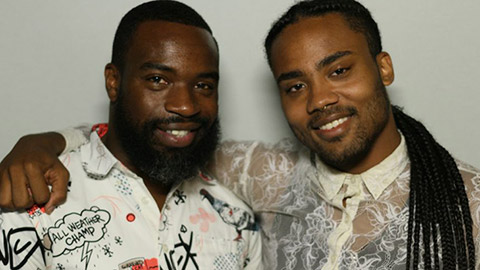
"I remember these awkward silences"
Listen as Kiyan Williams, who identifies as gender non-conforming, talks about what it was like coming of age feeling different from everyone else.
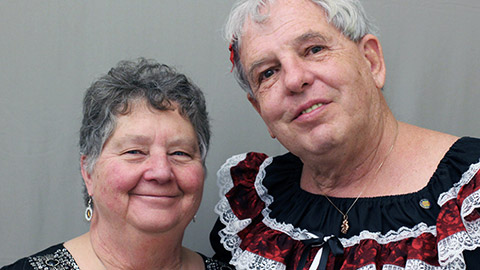
"You taught me how to love"
Listen as Sissy and Vickie talk about their life together and the challenges Sissy faced as a cross-dressing man.
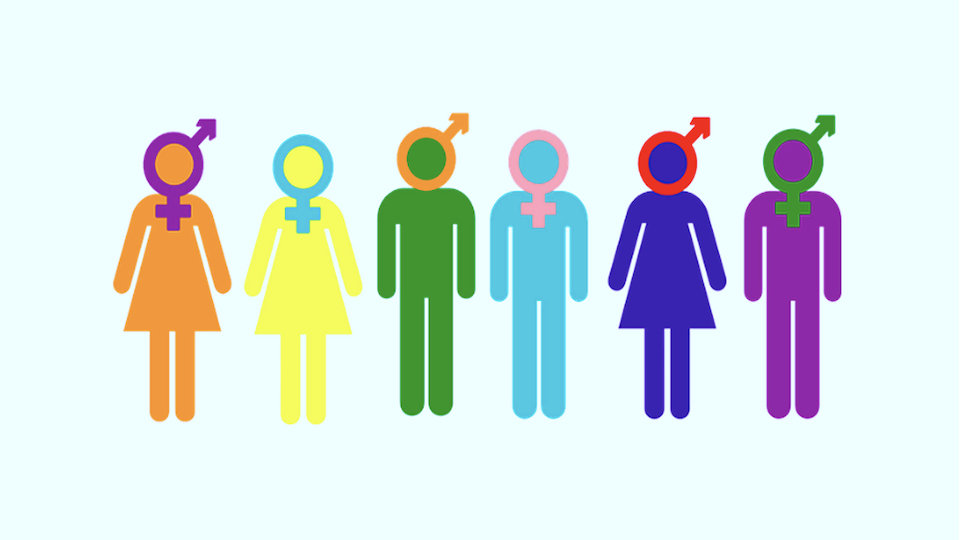
A gender journey
Ari Agha's journey to identifying as gender nonbinary was decades long with many twists and turns along the way.
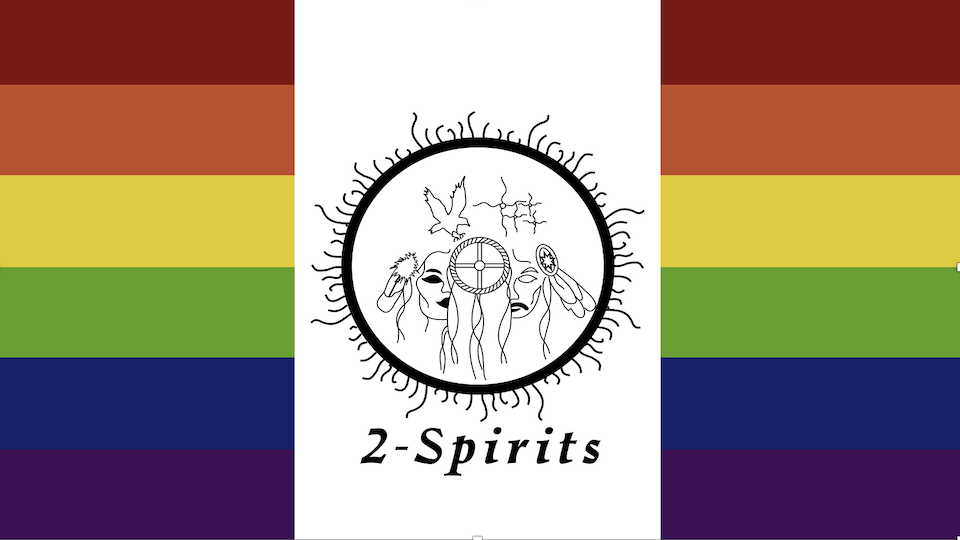
We'wha
We'wha, a Two-Spirit person of the Zuni tribe, was one of the most famous Native Americans of the 19th Century.

Meet Elijah/Esther
Read how Elijah/Esther feels and identifies as a woman some days, a man other days, and some days as neither.
The social construction of gender
Learn about gender as a social construction and how it changes over time.
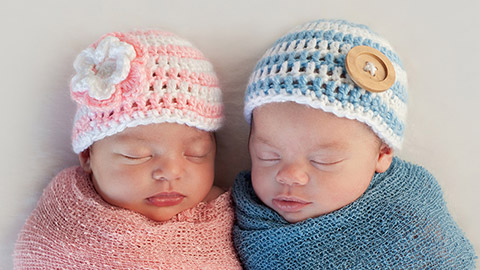
Lessons in gender
Learn about the different ways we teach and reinforce gender in our world today.

Change over time
Our approach to gender has changed over time and is still changing with our culture.

The battle over gender in youth organizations
Growing legions of girls are joining Scouts BSA, formerly known as Boy Scouts of America. Find out what's happening on the fast-changing landscape of scouting in the U.S.
Around the world
Worldwide, the variety of gender identity and expression is nearly boundless. Many cultures have long recognized not just two genders, but 3, 4, 5, or even more.
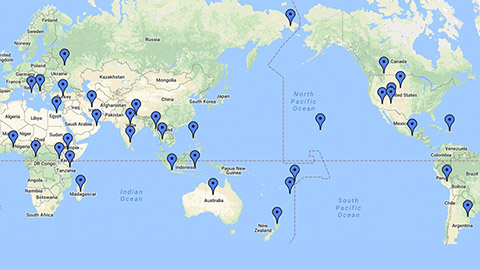
Gender-diverse cultures
Check out some of the gender-diverse cultures that have existed throughout the world.

Two-Spirit People
Learn about the Two-Spirit People who have been part of Indigenous communities for countless generations.
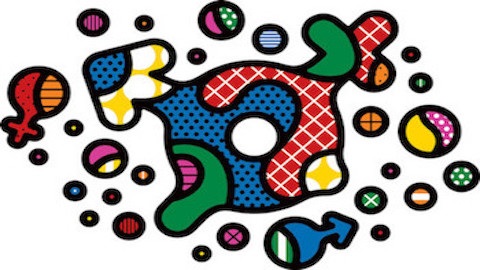
Across time and place
There's nothing new about gender identities beyond male and female--they've been around since ancient times.

A Culture of Acceptance
Learn about a culture of acceptance between masculine and feminine.
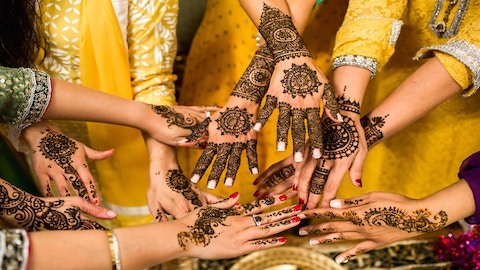
India's third gender
How did India accept a third gender? It was there all along.

Gender diversity in ancient Rome
Ancient priests known as Galli are a case study of gender diversity in history.
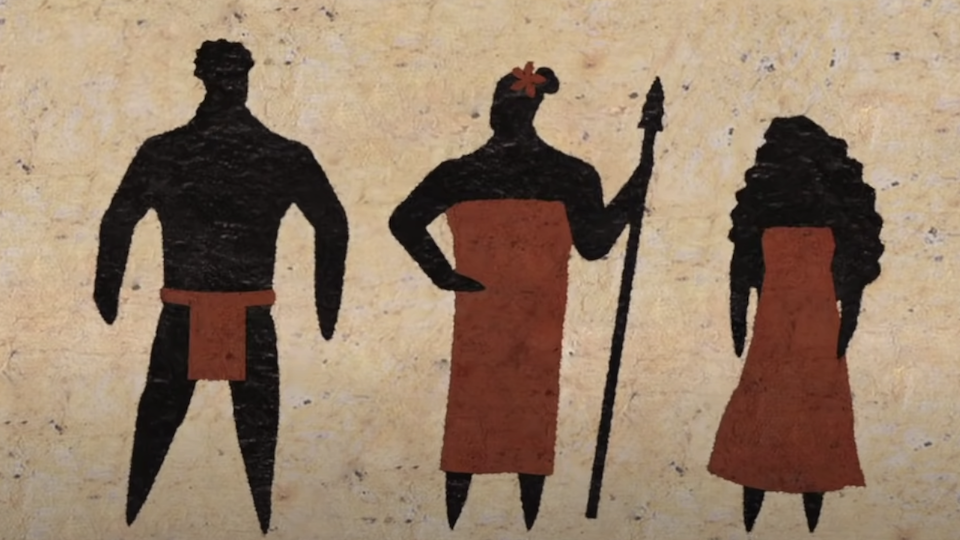
The meaning of Mahu
Embodiments of masculine and feminine: meet the Mahu of Hawaii.

The evolution of drag
Did you know that the term "drag" has its origin in Shakespeare's plays and that the history of drag stretches back even further? Learn about the evolution of drag as art and self-expression.

Refashioning gender
Why did women adopt masculine attire in the early 1900s? Turns out, there were a lot of reasons.
Glossary
AFAB
(Acronym) An acronym meaning Assigned Female at Birth. Generally not considered an identity, as calling a transgender man “AFAB,” for example, negates his identity as a man. Learn More
Affirmed Gender
(Noun) A term used to describe a person's gender, based on their innate understanding of themselves -- as opposed to the gender they were assigned at birth. A person can affirm their gender socially (e.g. changing one's pronouns), legally (e.g. legal name change), and/or medically (e.g. gender-affirming surgery). Increasingly used in place of older terms, such as preferred gender or chosen gender. Learn More
AMAB
(Acronym) An acronym meaning Assigned Male at Birth. Generally not considered an identity, as calling a transgender woman “AMAB,” for example, negates her identity as a woman. Learn More
Assigned Sex
(Noun) The sex assigned to an infant at birth based on the appearance of genitalia. It’s important to remember that biological sex consists of more than just genitalia, and includes internal reproductive organs as well as sex traits like hormone levels, chromosomes and genes. Learn More
Assumed Gender
(Noun) Describes the gender others presume an individual to be based on their assigned sex as well as societal gender markers, such as physical build, clothes, hair and voice. Learn More
Bottom surgery
(Noun) Refers to the surgery performed on an individual’s reproductive system as a part of gender-affirming surgery that some transgender people undergo (See Transition). Learn More
Cissexism
(Noun) Refers to prejudice or discrimination on the basis of sex, especially towards transgender or gender-expansive people. Includes the assumption that being cisgender is more natural or superior.
Cross-dressing
(Verb) To wear clothes typically associated with persons of a different gender for fun, self-expression, relaxation, etc. Cross-dressing is a form of gender expression and is not indicative of being transgender; persons who cross-dress are usually comfortable with their gender identity and do not wish to change it. Cross-dressing is distinct from drag in that it is not performative. Cross-dressing is not necessarily tied to erotic activity and is not a reflection of sexual orientation. Learn More
Deadnaming
(Verb) Occurs when an individual, intentionally or not, refers to the name that a transgender or gender-expansive individual used at a different time in their life. Can also be referred to as birth name, given name or old name. Deadnaming can cause stress, trauma, embarrassment and even danger for trans people. Learn More
Demiboy
(Adj.) A person who feels a partial but not full connection to a boy/man gender identity, regardless of their assigned gender at birth. Learn More
Demigender
(Adj.) An umbrella term for a person who feels a partial but not full connection to a particular gender. Anyone can be demigender, regardless of their assigned gender at birth. (See demiboy and demigirl.) Learn More
Demigirl
(Adj.) A person who feels a partial but not full connection to a girl/woman gender identity, regardless of their assigned gender at birth. Learn More
Drag / Drag King / Drag Queen
(Noun) The theatrical performance of one or multiple genders, often including makeup, costume, and/or dance. Performers in distinctly feminine attire are called Drag Queens, while performers in distinctly masculine attire are Drag Kings. Drag is a form of gender expression and is not an indication of gender identity. Individuals who dress in drag may or may not consider themselves to be transgender. They may identify as gay, lesbian, bisexual, straight or some other sexual orientation. Learn More
Enby
(Noun) A slang term used for nonbinary. Enby is the phonetic pronunciation of “NB,” an abbreviation for nonbinary. Learn More
Gender Affirming Surgery (GAS)
(Noun) Surgical procedures that allow persons to match their physical bodies to their gender identity. These procedures can include “top surgery” (e.g. reshaping a chest or providing breast augmentation) and/or “bottom surgery” (e.g. reshaping genitals). Also referred to as gender-confirming surgery, gender reassignment surgery or medical transition. Learn More
Gender Euphoria
(Noun) Describes the feeling of significant right-ness or comfort experienced when a person's gender is recognized and respected by others, when their body aligns with their gender, or when they express themselves in accordance with their gender. Focusing on gender euphoria instead of gender dysphoria shifts focus to the positive aspects of being transgender or gender expansive (see Gender Dysphoria). Learn More
Gender Expansive
(Adj.) An umbrella term used to describe people who do not follow gender stereotypes, or who expand commonly held ideas and norms of gender identity and expression. Gender-expansive people may be cisgender, identify with a mix of genders or not identify with a gender at all (see Agender). Some gender expansive people use gender-neutral pronouns while others do not. It is important to use the terms people use for themselves. Learn More
Gender expression
(Noun) The ways that a person communicates a gender identity to others such as dress, behavior, hairstyle, voice, and/or mannerisms. Learn More
Gender non-conforming (GNC)
(Adj.) Describes a person who does not behave in a way that conforms to traditional expectations for their gender, or whose gender expression does not fit neatly into a category. GNC does not mean non-binary and cisgender people can be GNC as well. Also known as gender variant. Learn More
Gender socialization
(Noun) Refers to the social process that introduces members of a society, such as children, about the social expectations, attitudes and behaviors that are typically associated with girls/women and boys/men. Varies across cultures and is usually taught through parents, teachers, peers, media and faith traditions. Learn More
Gender Spectrum
(Noun) The concept that gender exists along a continuum beyond man/masculine and woman/feminine. Some people may be more aligned with masculine or feminine aspects, some move fluidly along the spectrum, and some exist outside the spectrum entirely. Learn More
Gender variant
(Adj.) Describes a person who does not behave in a way that conforms to traditional expectations for their gender, or whose gender expression does not fit neatly into a category. Also known as gender non-conforming. Learn More
Hijra
(Noun) A term used in South Asia, and particularly in India, which refers to a diverse community including individuals who do not identify as men or women as well as persons who identify as women but who were assigned the sex of male at birth. Legally recognized as a third gender today, hijras have been a part of South Asian culture for centuries but have also suffered marginalization and abuse. Term should be used with care, as some within the community consider it to be offensive. Learn More
Hormone blockers
(Noun) Also referred to as puberty blockers. Hormone blockers are medications that prevent the body from producing hormones associated with the physical changes of puberty. This is a form of gender-affirming medical care provided to some transgender youth. Learn More
Hyperfemininity
(Noun) A term used to describe exaggerated feminine qualities, behaviors and roles stereotypically associated with girls and women. Hyperfemininity is sometimes expected of transgender women in order be seen as “real” women. Learn More
Hypermasculinity
(Noun) A term used to describe exaggerated masculine qualities, behaviors and roles stereotypically associated with boys and men. Hypermasculinity is sometimes expected of transgender men in order be seen as “real” men. Learn more
Intergender
(Adj.) Refers to a person who identifies between or as a mix of man/woman. Learn More
Legal Transition
(Noun) Refers to the process through which a transgender person changes names and/or sex/gender categories on legal documents. These documents can include an updated driver’s license, social security card, and birth certificate. Other changes might involve changing government, work, school, bank and other institutional records. Learn More
Medical Transition
(Noun) Refers to the process through which a transgender person alters their physical appearance through medical procedures to reflect their gender identity. For example, adolescents might begin with puberty blockers and hormone treatments while adults might choose to undergo gender affirmation surgery. Not all transgender people undergo medical transition. Learn More
Misgender
(Verb) Using pronouns or a form of address that does not align with an individual's gender identity. Misgendering may be unintentional or can be used intentionally to express bias. Learn More
Mispronoun
(Verb) Refers to addressing a person with the incorrect pronouns. To mispronoun may be unintentional or can be used intentionally to express bias. Learn More
Mixed Pronouns
(Noun) Refers to a situation in which a person uses multiple pronouns, such as she/they or they/he/she. Generally, mixed pronouns can be used interchangeably. However, the desired balance among different pronouns can be different for each person. Learn More
Polyromantic
(Adj.) Describes a person who experiences romantic attraction towards multiple but not all genders. Learn More
Social Transition
(Noun) Refers to the process through which a transgender person makes changes in their name, pronouns, and/or appearance. For example, a child might shift to using a name and pronouns that align with their gender identity rather than their sex observed at birth. Trans women might grow their hair out and wear makeup; trans men may ‘bind’ or compress their breasts. Learn More
SOGI
(Abbreviation) Short for Sexual Orientation and Gender Identity. More commonly written than spoken.
Third gender
(Noun) A concept in which individuals are categorized by themselves, their society, or outsiders to their society, as not fitting into the Western ideas of binary gender and heterosexual roles. The phrase "third gender" has been used for a wide variety of meanings, including in reference to: hundreds of indigenous societal roles as described (and often misrepresented) by Western anthropologists; transgender people who are nonbinary; and women who are considered to be gender-nonconforming. The term can be considered offensive. When possible, use the culturally appropriate and/or individually preferred term when referring to someone’s gender identity in lieu of “third gender.” Learn more
Top surgery
(Noun) Refers to the surgery performed on a person’s chest or breasts either to reshape a chest or to provide breast augmentation as part of gender-affirming medical care that some transgender persons undergo. (See Gender-affirming Surgery) Learn More
Transromantic
(Adj.) Describes a person who experiences romantic attraction to individuals whom they perceive to be transgender. Learn More
Explore More Topics
Citations & Sources
Bakker, J. (2018) Brain structure and function in gender dysphoria. Endocrine Abstracts, 56(S 30.3). https://www.endocrine-abstracts.org/ea/0056/ea0056s30.3.htm
Biswas, S. (2019, May 31). How Britain tried to 'erase' India's third gender. BBC News. https://www.bbc.com/news/world-asia-india-48442934
Bodkin, H. (2018, May 22). Transgender brain scans promised as study shows structural differences in people with gender dysphoria. Telegraph. https://www.telegraph.co.uk/news/2018/05/22/transgender-brain-scans-promised-study-shows-structural-differences/?WT.mc_id=tmg_share_fb
CBS News. (2017, March 23). Non-binary: The gender beyond he or she [Video]. YouTube. https://www.youtube.com/watch?v=Q0ahBHJbyCg
Cocking, L. (2018, January 10). A brief history of Mexico’s third gender. The Omnivore. https://medium.com/the-omnivore/a-brief-history-of-mexicos-third-gender-7d80451419e6
Geiger, A.W., & Graf, N. (2019, September 5). About one-in-five U.S. adults know someone who goes by a gender-neutral pronoun. Pew Research Center Fact Tank. https://www.pewresearch.org/fact-tank/2019/09/05/gender-neutral-pronouns/
Graf, N. (2019, December 18). About four-in-ten U.S. adults say forms should offer more than two gender options. Pew Research Center Fact Tank. https://www.pewresearch.org/fact-tank/2019/12/18/gender-options-on-forms-or-online-profiles/
Havas Global Comms. (2017, September 18). The future is FeMale. Havas Group. https://download.havas.com/prosumer-reports/future-is-female/
Herman, J., Flores, A., Brown, T., Wilson, B., & Conron, K. (2017, January). Age of individuals who identify as transgender in the United States. Williams Institute, UCLA School of Law. https://williamsinstitute.law.ucla.edu/publications/age-trans-individuals-us/
India court recognises transgender people as third gender. (2014, April 15) BBC News. https://www.bbc.com/news/world-asia-india-27031180
Joel, D., Tarrasch, R., Berman, Z., Mukamel, M., & Ziv, E. (2013). Queering gender: Studying gender identity in ‘normative’ individuals. Psychology & Sexuality, 5(4), 291–321. http://people.socsci.tau.ac.il/mu/daphnajoel/files/2014/11/Joel_gender_identity_2013.pdf
Kaur, H. (2019, October 16). Why it matters what pronouns you use to refer to people and what to do if you slip up. CNN. https://www.cnn.com/2019/10/16/us/preferred-gender-pronouns-explainer-trnd/index.html
Khaleeli, H. (2014, April 16). Hijra: India's third gender claims its place in law. Guardian. https://www.theguardian.com/society/2014/apr/16/india-third-gender-claims-place-in-law
Leguizamon, M., & Griggs, B. (2018, February 6). More US teens are rejecting 'boy' or 'girl' gender identities, a study finds. CNN. https://www.cnn.com/2018/02/06/health/teens-gender-nonconforming-study-trnd/index.html
Miller, C. (2015, October 30). Boys and girls, constrained by toys and costumes. New York Times. https://www.nytimes.com/2015/10/31/upshot/boys-and-girls-constrained-by-toys-and-costumes.html?_r=1
Moskowitz, C. (2010, June 6). Kids learn gender stereotypes at home. Live Science. https://www.livescience.com/6621-kids-learn-gender-stereotypes-home.html
Nambiar, S. (2017, January 1). A brief history of Hijra, India’s third gender. Culture Trip. https://theculturetrip.com/asia/india/articles/a-brief-history-of-hijra-indias-third-gender/
Nunberg, G. (2019, August). Opinion: Even a grammar geezer like me can get used to gender neutral pronouns. NPR. https://www.npr.org/2019/08/06/744121321/even-a-grammar-geezer-like-me-can-get-used-to-gender-neutral-pronouns
A map of gender-diverse cultures. (2015, August 11). PBS. http://www.pbs.org/independentlens/content/two-spirits_map-html/
Richards, C., Boumanam, W.P., Sealb, L., Barker, M. J., Niederd, T.O., & T'Sjoene, G. (2016). Non-binary or genderqueer genders [Abstract]. International Review of Psychiatry, 28(1), 95-102. https://pubmed.ncbi.nlm.nih.gov/26753630/
Rider, G.N., McMorris, B., Glower, A., Coleman, E., & Eisenberg, M. (2018). Health and care utilization of transgender and gender nonconforming youth: A population-based study. Pediatrics, 141(3). http://pediatrics.aappublications.org/content/early/2018/02/01/peds.2017-1683
Saturday Night Live. (2017, September 30). Levi’s wokes [Video]. YouTube. https://www.youtube.com/watch?v=adPXDTvADD0
Scobey-Thal, J. (2014, June 30). Third gender: A short history. Foreign Policy. https://foreignpolicy.com/2014/06/30/third-gender-a-short-history/
Silverman, H. (2019, August 1). 2 more states will offer a 3rd gender option on driver's licenses. CNN. https://www.cnn.com/2019/08/01/health/washington-pennsylvania-gender-x-id/index.html
StoryCorps. (2014, December 17). Darnell Moore and Kiyan Williams [Audio podcast]. https://storycorps.org/listen/kiyan-williams-and-darnell-moore/
StoryCorps. (2016, June 3). StoryCorps 423: Sissy [Audio podcast]. https://storycorps.org/podcast/storycorps-423-sissy/
Substance Abuse and Mental Health Services Administration (2012). Top health issues for LGBT populations information & resource kit. Rockville, MD: HHS Publication No. (SMA) 12-4684. https://store.samhsa.gov/shin/content/SMA12-4684/SMA12-4684.pdf
Suddath, C. (2019, April 17). Boy scouts are just scouts now, and that’s making girl scouts mad. Bloomberg Businessweek. https://www.bloomberg.com/news/features/2019-04-17/boy-scouts-are-just-scouts-now-and-that-s-making-girl-scouts-mad
Synowiec, O. (2018, November 26). The third gender of southern Mexico. BBC Travel. http://www.bbc.com/travel/story/20181125-the-third-gender-of-southern-mexico
Trammell, K. (2019, September 18). Merriam-Webster adds the nonbinary pronoun 'they' to it's dictionary. CNN. https://www.cnn.com/2019/09/17/us/merriam-webster-nonbinary-pronoun-they-trnd/index.html
Wren, C. (2017, September 21). Five insights about gender and brands. Branding Strategy Insider. https://www.brandingstrategyinsider.com/2017/09/five-insights-about-gender-and-brands.html
Yuan, O. (2020, January 6). Gender means more than you think it does. Ipsos. https://future.ipsos.com/gender/gender-means-more-than-you-think-it-does
